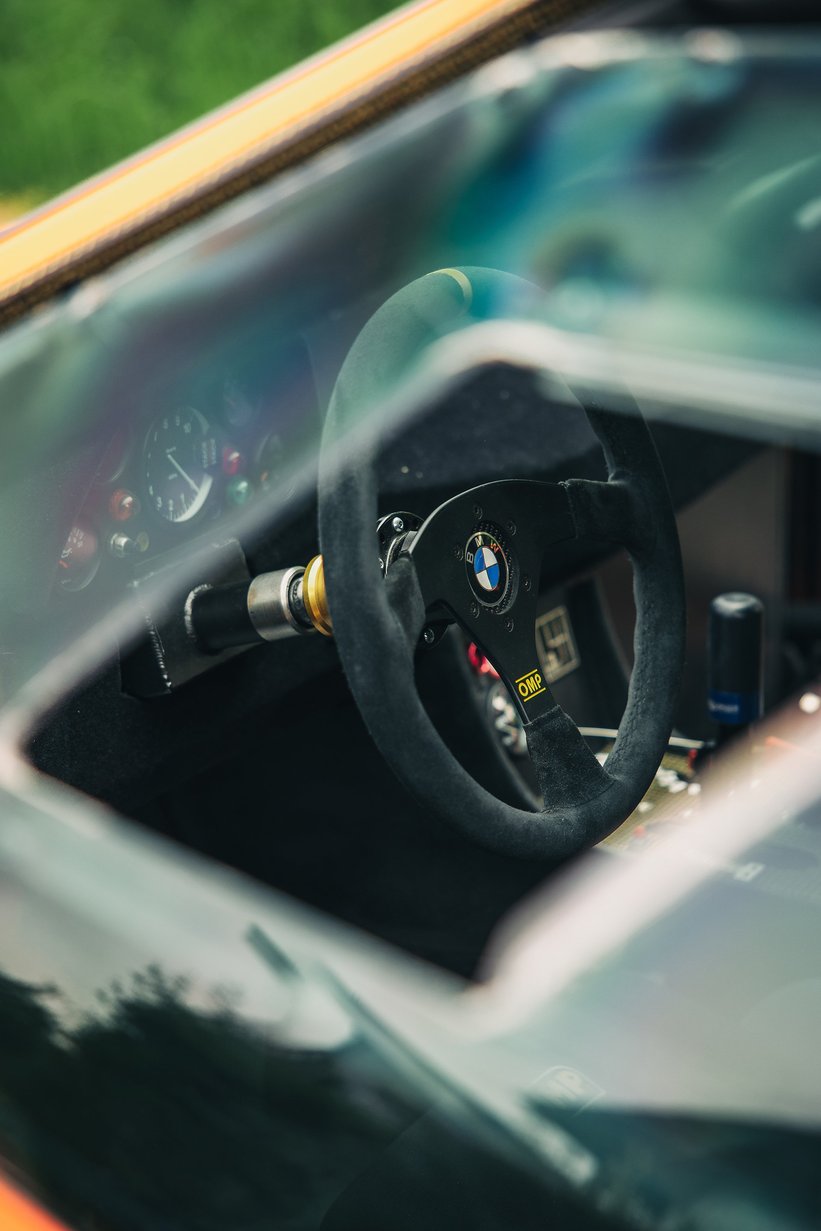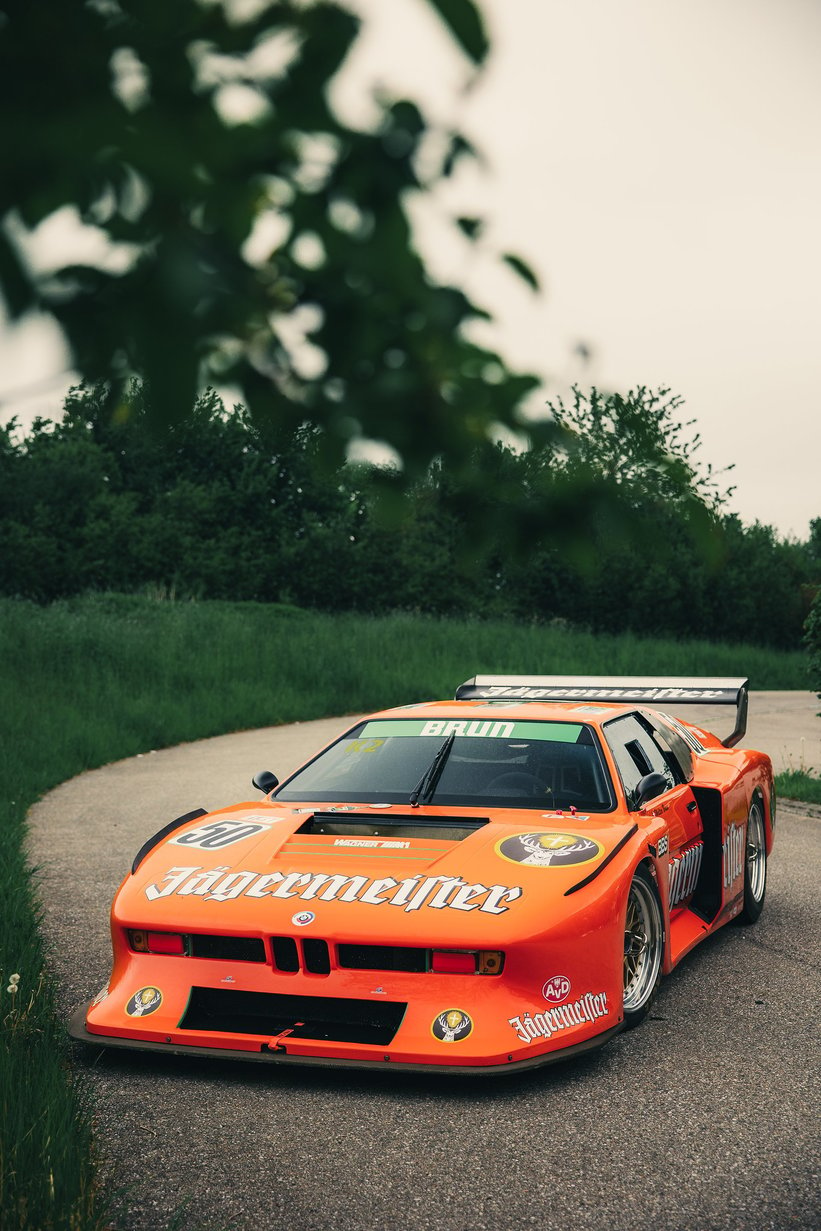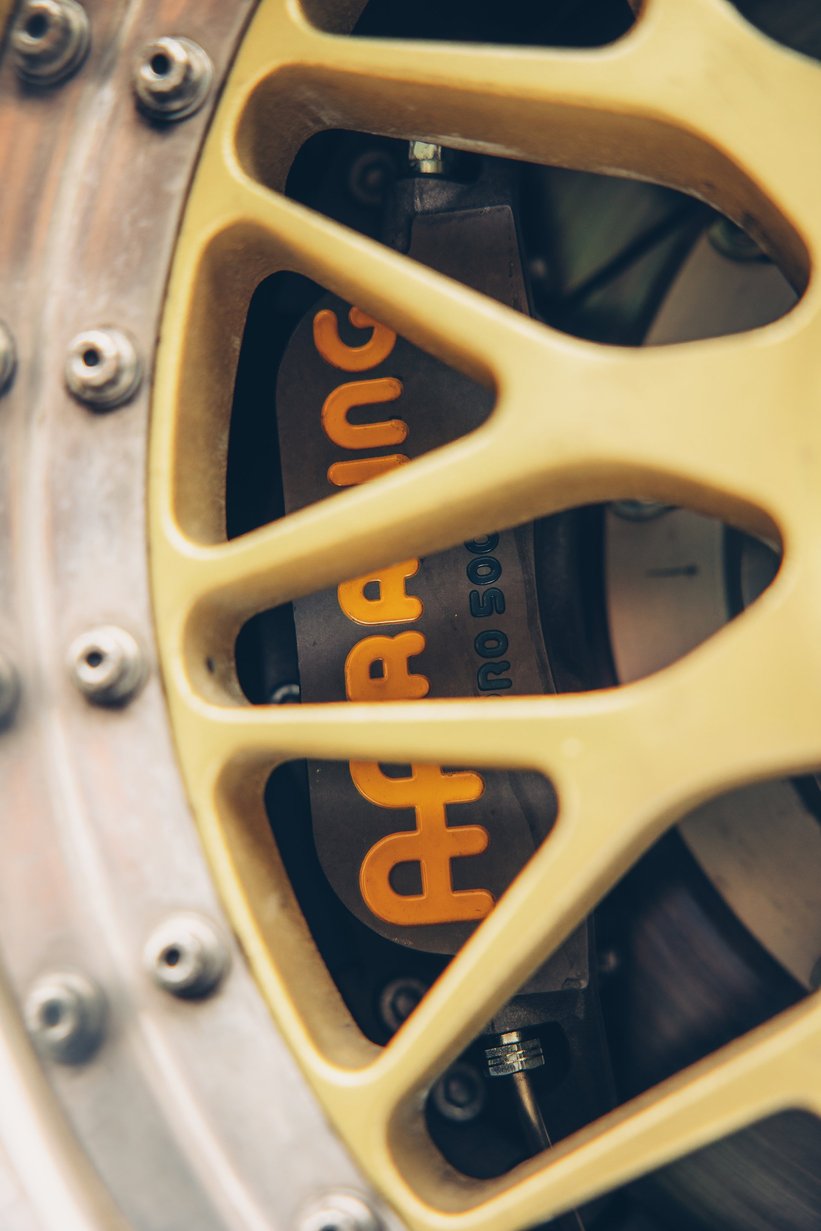

Ignore the livery. Or don’t ignore it. Like with every other Jägermeister racing car, it might be hard to actually walk past this orange beast without giving the standout paint job at least one glance. It was designed to attract attention, just how Günter Mast — the man that gave his OK to race cars with the famous stag on the bonnet — intended. The truth of the matter is, however, that this particular car’s convoluted history is as complicated as the story of the BMW M1 itself. Therefore this car is not what it seems to be, as the orange Jägermeister livery stems from the imagination of the man that rebuilt the car, the legendary M1 whisperer Fritz Wagner. And if you ask anyone at Jägermeister headquarters about the car, they will potentially reply with a polite letter from their legal department.


To paraphrase Samuel Beckett: there’s nothing funnier than tragedy. And so, the story of the BMW M1 could be perceived as one of the automotive world’s funniest. The car was originally designed with the ambition to create the greatest, mid-engined racing car of all time. One that would beat Porsche’s dominating 935 in the all-important Group 5. A masterpiece made of speed and German reliability which, in reality, became a car that had to be reverse engineered to be sold for the road. All because of changes in racing rules and homologation, which stipulated how many cars had to be produced before a particular model was allowed to hit the track. The production number of 400 cars — which seems so minuscule by today’s standards — turned out to be the first problem on a long list of unfolding disasters.


In essence, the life of this beautiful, light, well-made machine that had been designed by Giorgetto Giugiaro, who reworked Paul Bracq’s original prototype, was plagued by bad luck and bad decisions. The fact that Lamborghini — who were supposed to produce it at their factory — went bust because of copyright fraud and embezzlement of funds didn’t help. However, it was the rushed solution to disperse production all over Europe that was the final nail in the coffin. Marchese built the car's tube frame, TIR molded the fiberglass, Italdesign mated the two and installed the interior, then the M1 was shipped from Italy to Stuttgart, where Baur would install the BMW hardware, after which in Munich BMW Motorsports would do the final touches and quality control. It made the M1 almost a quarter more expensive than any equivalent Ferrari or Lambo sold at the time. Case closed.


British generals in the second world war would often joke that Germans were not very good when it came to Plan B. This might be true. In the end, even if BMW’s head of Motorsport Jochen Neerpasch, the brilliant man that he is, thought of a way to market the M1 with the Procar series, in which F1 drivers like Niki Lauda, Clay Regazzoni, and Nelson Piquet would race the cars against privateers, as a prelude to the weekend's Formula 1 race, too few examples were made for the car to ever officially leave Group 4 as was originally intended. Later on, those teams who managed to finally race in Group 5, years after BMW abandoned the programme in order to enter to F1, found the M1 simply uncompetitive. Even the twin-turbocharged models built by Schnitzer, which developed 800 hp and more from their straight six engines, were plagued by problems.


This finally brings us to this particular, rather unusual example. It was allegedly built for the famous Walter Brun racing team, who later on won the Group C World Championship with a Jägermeister-liveried Porsche 956. Brun’s friendship with Paul Rosche, the man who turbocharged the BMW 2002, gave rise to the idea of installing the M88 turbo engine originally planned for the March Group-5 car into a modified M1 Procar chassis wrapped into Group 5 bodywork. However, the car was never raced. Why? Even at BMW no one knows.


Almost 40 years later, the abandoned BMW M1 Turbo project was completed by Fritz Wagner. The BMW mechanic had bought almost all the parts for these cars for next to nothing back when they were completely worthless, and therefore had amassed such a vast collection of components that he was able to build entire M1s from scratch using only original parts. And so, after a year and a half of research — which involved digging into the BMW M archive — and hunting for many parts in South Africa, America, England and Bavaria, including crucial components such as the cylinder head and crankshaft specific to this engine, this unique M1 on steroids saw the racetrack for the first time in 2022 at the M1 Procar Revival.


Particularly good news considering that back in the day, when this 1090 kg machine was put on a dyno, it put out 1000 hp and 930 NM of Torque. A reading obtained just before the machine broke while the car apparently still wanted to keep going. Now in the hands of a new owner who intends to race it regularly, it will have plenty of opportunity to shine. And so a new chapter unfolds…
Photos: Daniel Nikodem for Classic Driver



































